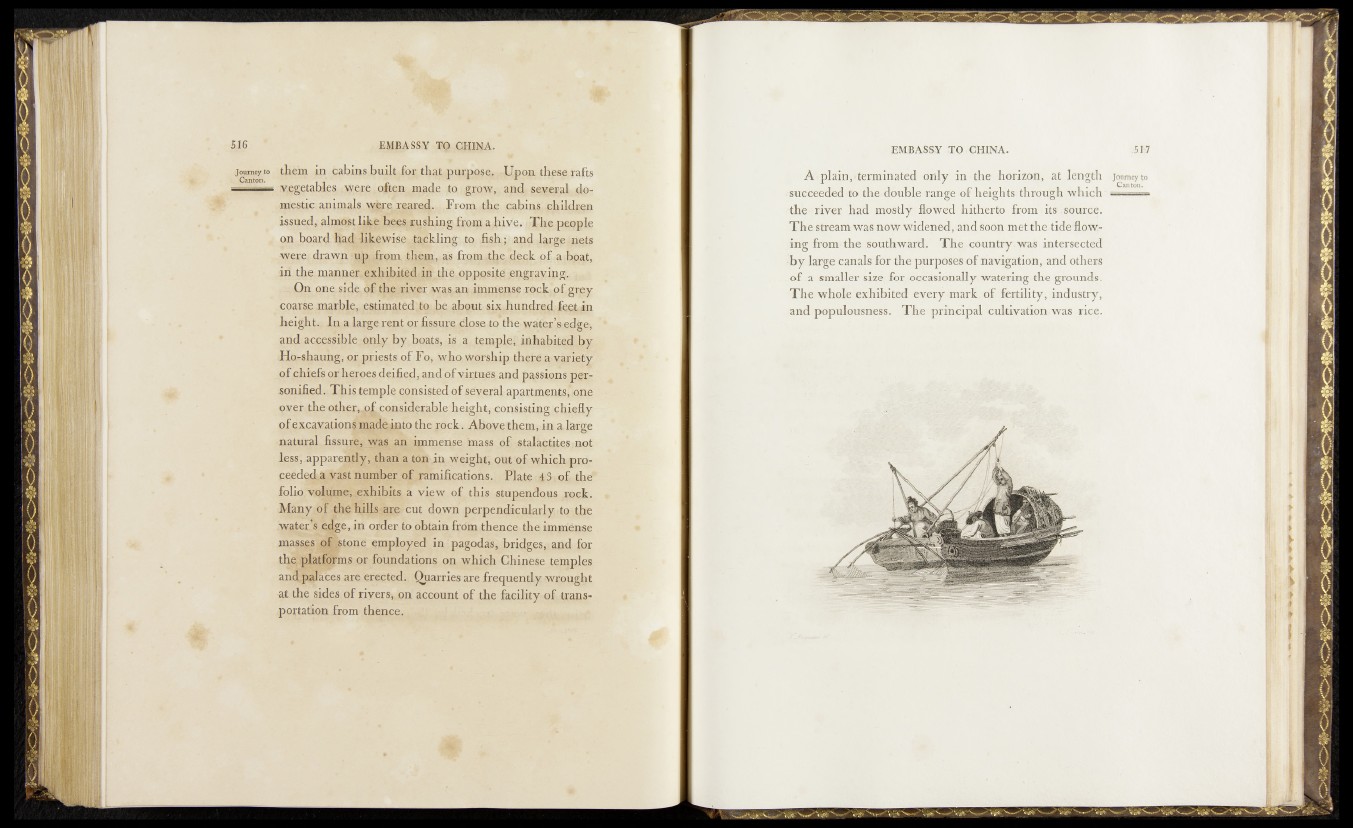
5.16 EMBASSY TO GHJMA.
Joiunsyto them in cabins.buffi Jara: thag.purno$. .daaton. . " ” yf ' fy, JTTpnp thesÉrafts
Vegeta hies, i.F,ejre | often ^ipade to grow,,, and several, df-
<pestic anipaals r a y ^ ^ F r om . ..foe q a b ii^ l^ il^ ^ n
issuefb almost Ijjj^. hea%fy?hing from a hiye- gfifrpj Tïlffltilfi
4 on board had lihewKe Jackling ,to fish; and large jjögtjs
-were drawn upstirom them- as fr^^the^dénk ofa.bpat,
in the mannenexhihitgd in^ epppositp^ngrjyipg.. **
Qn t|i^griyp róct^)^gr#7
coarse fmarHe,. estimated stq. be ffifut six hundred ifeeJ^jn
.height In a large rent or fissure »close,to the.wate r,s»edg<»1
and accessible^enky by boats, is a temple; inhabited.by
Ho-shauiig, or priests of Fo, who worship there a variety
_pf chiefs ojR’b^oes deified ,-ap^Cpf yartués and passions personified.
This temple consisted óf several aparfertteutsfkmte
oyer the o th e r^ f considerabieheight eonsistingiehiefiy
of ëxcayatipnÉ te d einto thegpck. Above thenijin ad&rge
natural fissiirg, was au im m ense mass of stalactites ?not
less,.apparejj||, than a tón in weight, out of whieh.;pro-
ceed ^,a Vast number of ramifications. Plate 43tof the*
folio volume, jcxhibits a view, of this stupendous ,roqk.
Manyiof the hills atefeut down perpendacufarlyi.to the
water’s edge, in order to obtain from thenqe the immense
masses oflstone employed in pagodas, bridges,; and for
the,,platfdnns or foundations on which Chinese temples
and palaces are erected.. Quarries are frequently wrought
at the sides, of rivers,, on account of the faeility~of, transportation
.from thence.
EMBASSY TO »CHINA. .51:7
A plain,»terminated only in the horizon, at length janrmyto
■ succeeded to the. doub%range• of heights through which ------- r
th e 'riv e r had mostly flowed hitherto from .its .source.
T h e stream was now widened, and soon metthe.tide:flow.-
ing from, the southward. T h e I country was i intersected
b y large canals for the purposes o f navigation, and others
o f a smaller size for occasionally watering the grounds.
T h e whole exhibited every mark of fertility, industry,
and populousness. T he principal cultivation.was -rice